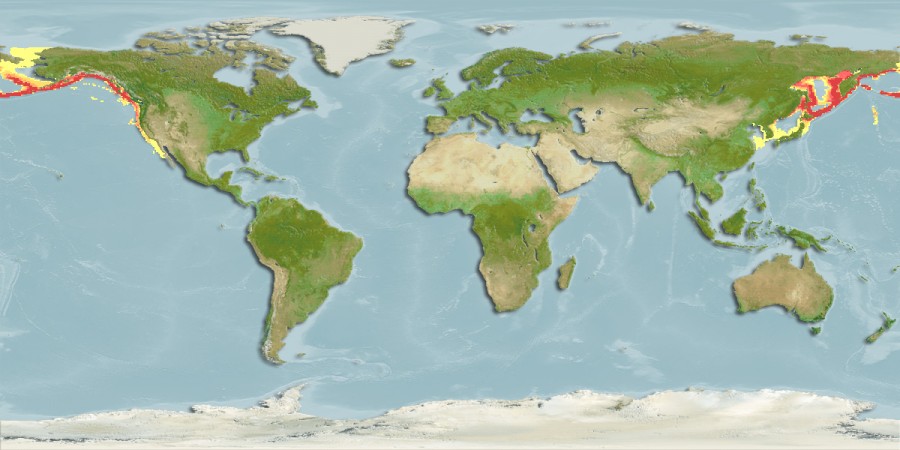The Pacific Sleeper Shark (which is essentially a giant dogfish) is a common large temperate species found in the "Northwest Pacific to northeast Pacific: Japan along the Kuril Islands, Sea of Okhotsk and Bering Sea (Russia) to the Chukchi Sea and southward to southern California (USA), and Baja California (Mexico) (Ebert, 2003). Also, recently found off Taiwan (Wang and Yang 2004)" (
IUCN 2011). It occurs at depths ranging from 0 to 2000 m (
Fishbase 2011, IUCN 2011). It may be found in shallower waters at the northern extent of its range, but is found only in deep waters are the lower extent of its range (IUCN 2011). Lengths are confirmed up to 4.4 m (14 ft.), however, lengths of up to 7 m (25 ft.) are reported-- a Pacific Sleeper Shark filmed in Japan was estimated to be 7 m (23 ft.) in length (Fishbase 2011, IUCN 2011). Diet is varied and includes cephalopods, flatfish and Harbour Seals (
Taggart et al. 2005)--research shows that this is one of two species reported to feed on mature giant squid and colossal squid; the other is the Sperm Whale (Wikipedia 2011).
Recent observation by researchers has shown that Killer Whales prey on Pacific Sleeper Sharks--
read more about this.
This species is presently common in the North Pacific, however, it is significantly affected by fisheries operations. The IUCN (2001) says: "This species is taken as bycatch in several fisheries and usually discarded. It is notably affected by bottom trawl fisheries in the western Bering Sea (Orlov 2005), by longline fisheries for sablefish and Pacific halibut in the eastern North Pacific (Courtney et al. 2006a, b). Incidental catch in US waters in 2006 was 435 mt, in some years it has reached ~ 1,400 mt (Courtney et al. 2006a, b)". Detailed information on it population numbers, ecology and biology is lacking (IUCN 2011):
